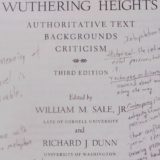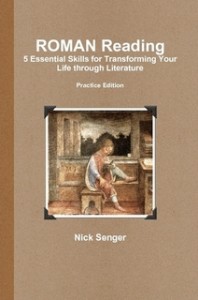What Do Teenagers Believe?
How do we help junior and senior high students ask the deep questions about life, and–more importantly–answer those questions? One way is to use the This I Believe curriculum unit from National Public Radio.
Each week National Public Radio airs 3-minute personal essays written by ordinary people and occasionally by more famous personalities. The essays express the authors’ deeply held beliefs, and their reasons for believing. As the website states, “This I Believe is an international project engaging people in writing, sharing, and discussing the core values that guide their daily lives.”
Recent essays have included the following statements of belief:
- “I believe that each and every human being on this planet is tied to every other human being on this planet in one way or another.”
- “I believe that we as individuals, nations, and as groups of any size in between are ultimately capable of compassion and care for those with whom we do not identify.”
- “I believe in giving blood.”
- “I believe that the best kind of grief for the dead is gratitude.”
This I Believe, Inc. encourages everyone to contribute to the project, and provides teachers with a curriculum for helping students write their own 300-500 word essays. The essays can be submitted directly to the This I Believe website, and essays that are selected to be recorded for radio earn the author $200.
My own students are currently in the middle of writing their own essays. We began the unit last week by looking at the difference between personal narratives and personal essays. I played a few This I Believe recordings and contrasted them with a personal narrative included in the curriculum unit.
The students were then given various belief statements to agree or disagree with, and they had to tell a personal story about why they held that belief. This week students will write their essays, and next week we will submit them to This I Believe and record them for our Called 2 B Saints podcast.
The students are discovering that it’s pretty easy to name a belief, but what’s not so easy is explaining why they have a particular belief. One of the challenges of teaching a unit like this is to keep it from evolving into a persuasive paper where every student tries to convince the class that their belief is right and everyone else is wrong. That’s not really the purpose of the project.
The goal project “is not to persuade Americans to agree on the same beliefs. Rather, they hope to encourage people to begin the much more difficult task of developing respect for beliefs different from their own.”
At the other end of the spectrum, it’s a challenge to help teenagers retain their own values and beliefs in the face of so many differing statements. Too often, teenagers think they have to abandon their personal beliefs in order to get along with others. Or, out of a well-intentioned desire to be accepting and tolerant, teens will often say that everyone is right, regardless of the fact that beliefs contradict each other.
The This I Believe unit can help students clarify their own beliefs while at the same time learn to respect the beliefs of others. If you choose to teach a unit like this, it’s a good idea to be ready to talk about how to “agree to disagree,” something that more adults could learn to do.
But the teacher’s main job in a curriculum like this is mostly to get out of the way so students can write.
I’ll let you know when the students have finished writing their essays so you can read them and listen to them on Called2BSaints.com.













I have been teaching a unit for grade 12’s for the
last 10 years where they have to write their personal philosophy. It is a great essay to do
right before graduating and it is amazing what insight they show.
My class finished their essays a few weeks ago, and they were very powerful. I’m still trying to find time to post the ones we recorded as podcasts. Hopefully they’ll be up soon. Thanks for the comment.